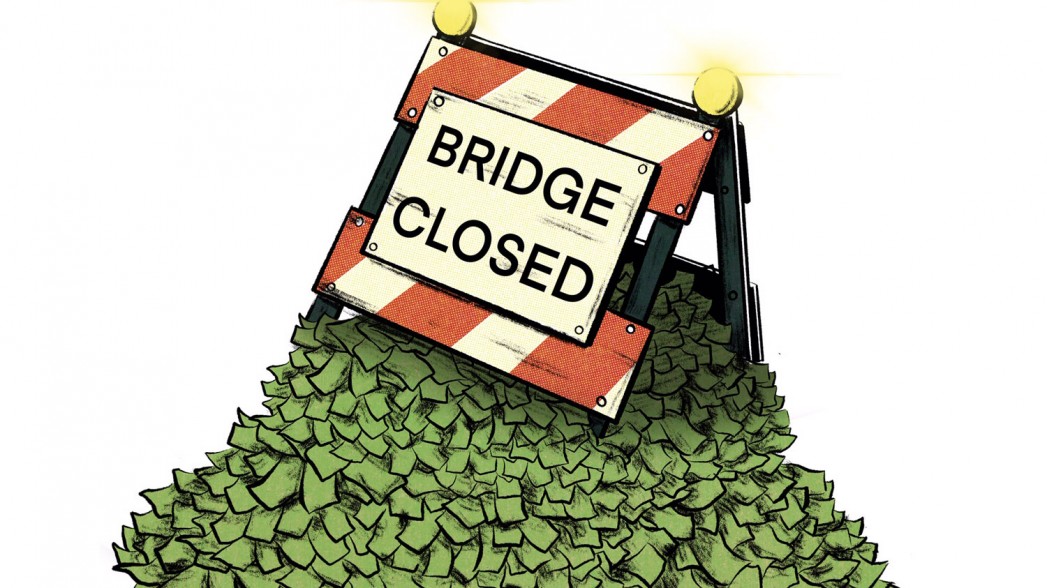It has to be sheer coincidence that tens of thousands of toll-dodgers on the Sherman Minton Bridge will be forced to find alternate routes across the Ohio River 13 months from now, when a $90-million extensive refurbishment shuts down two, four or (shudder to think) even all six lanes of the double-deck I-64 bridge for up to three years — a scenario unfolding while the three new (revamped in the case of the Kennedy) toll bridges have drawn lukewarm numbers of users. Looks like those toll figures might be getting a boost in 2021.
A post-construction survey of traffic flow changes a year after completion of the Ohio River Bridges Project found that daily usage of the toll-free Sherman Minton increased by 23 percent between 2013 and the start of 2018 — from 73,400 to 90,000 vehicles per day; the toll-free, 90-year-old, four-lane Clark Memorial Bridge (the Second Street Bridge), even with its paint job going on, saw a 75-percent jump. Meanwhile, the old two-way Kennedy — which averaged 125,700 vehicle crossings in 2013, the year ORBP work started — had its usage drop by almost half to 64,200 as a one-way-south bridge; amazingly, that total includes traffic on the one-way-north Abraham Lincoln Bridge. The traffic count on the far-east Lewis and Clark was 21,200 vehicles daily after its construction.
Do the math: The higher-trafficked Sherman Minton and Clark Memorial added to the toll-bridge figures comes out a little light of the 2013 usage total — negligible, yes, but still a sign that 2,500 people a day hadn’t been making the cross-river trips they were in 2013. You know, the money and the hassle. (Newer statistics from the RiverLink tolling system determined an 8 percent increase in toll-bridge crossings by the end of 2018.)
Back in 2011, discovered cracks in the Sherman Minton caused a panic and five-month bridge closure, disrupting commute and commercial routines for lots and lots of truckers and river-crossing employees. Beyond the aggravation, though, they could find a free alternate route because no bridges then were tolled. This new shutdown is going to be way different, and not just because people are hyper-frugal and the purgatory time is three years. Many of them don’t believe in the principle of tolling. They agree with national economic-development researcher Aaron Renn, who wrote in LEO Weekly that the downtown-bridges project is “the biggest American transportation boondoggle I can identify in the 21st century so far.”
Perhaps ironically, the Clark Memorial began as a toll bridge, charging car-crossers 35 cents downgraded to 25 cents for 17 years after its 1929 opening. But that was it for bond payments and tolls. The current tolls will continue until bonds are paid off, scheduled for 2054, but there are no guarantees that tolling won’t continue to help fund future bridge projects.
This originally appeared in the November 2019 issue of Louisville Magazine under the headline “Gapping the Bridge.” To subscribe to Louisville Magazine, click here. To find us on newsstands, click here.
Illustration by Shae Goodlett, shaedraws.com


